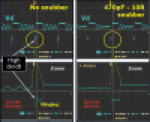Ringing with High Quality Components
In this article for InCompliance magazine, instructor Arturo Mediano discusses how using higher quality components with low parasitics can actually cause problems in your system by ringing.
- Read more about Ringing with High Quality Components
- Log in to post comments





